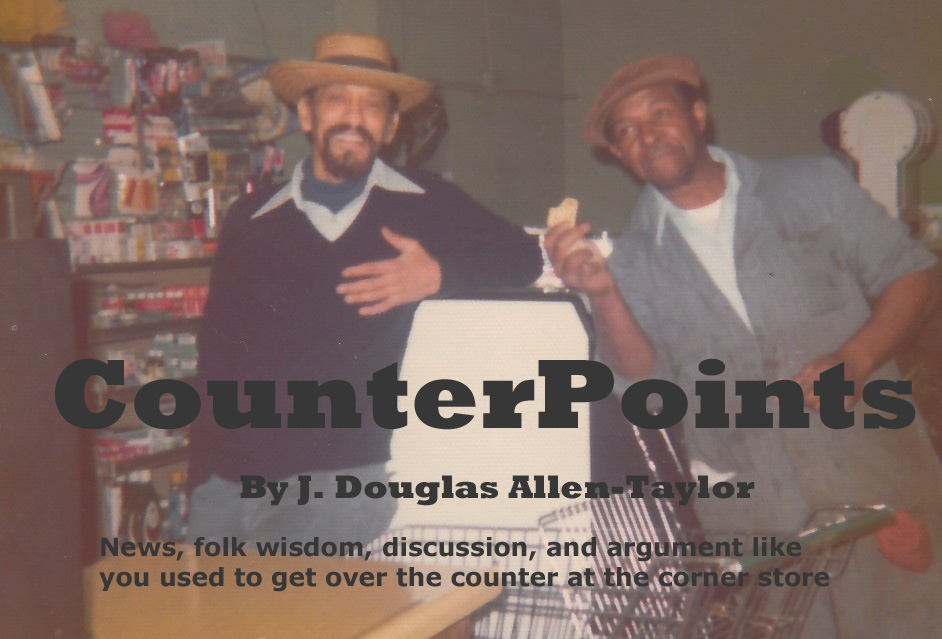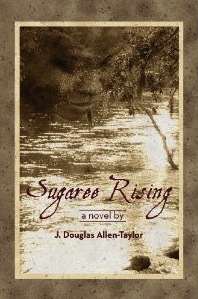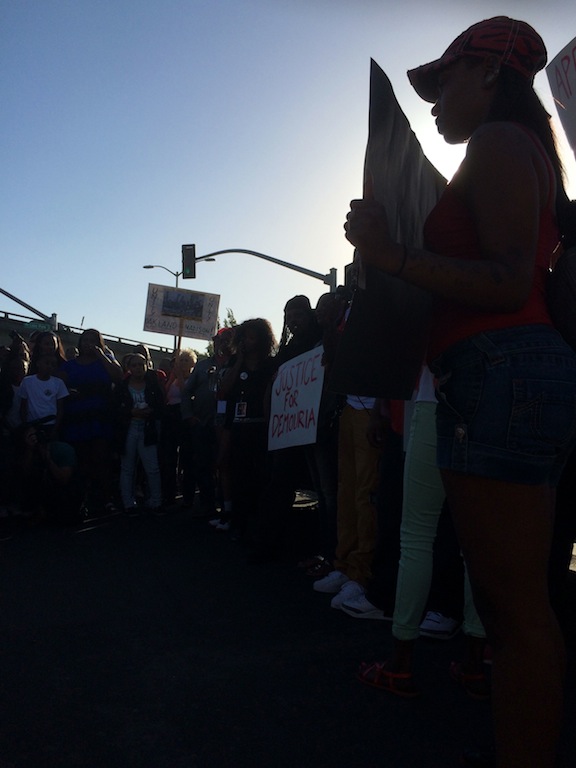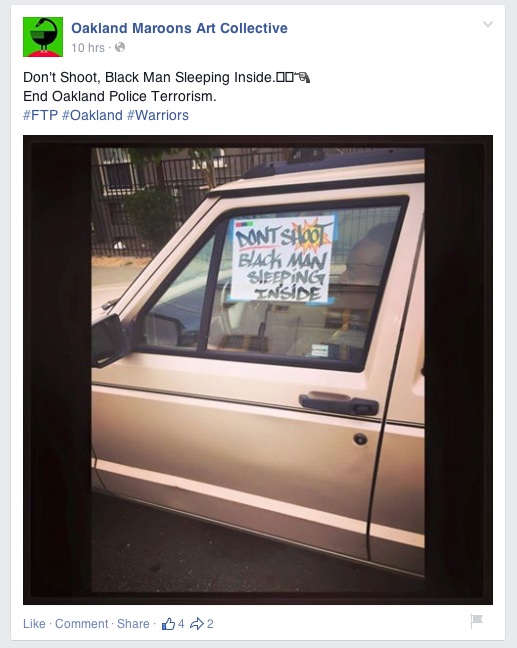|
|
Shot For Sleeping?
June 16, 2015 Slogans are, without a doubt, among the most powerful of the tools used by a social protest movement. When slogans are on point, they capture the spirit, the emotion, the hopes, and the goals of such movements in a single catch phrase that protesters can easily carry around them either on the picket line or at a demonstration or into their general lives beyond, providing a rallying cry that both lifts the protesters’ own spirits as well as giving a compelling incentive to others to come and support whatever the Great Cause of the moment happens to be. The best of the movement slogans—“Freedom Now!”—“Black Power!”—“Viva La Raza”—“Make Love, Not War”—“No Justice, No Peace”— resonate down through the ages long after their original movements have faded. We can expect that recent entries such as “Black Lives Matter” will almost certainly do the same. But there is a danger that slogans can be misused, particularly when they are applied to particular incidents or individual situations rather than to a general goal or social condition. That’s because slogans derive their power from their directness and lack of nuance. That can work if one is making a general demand, such as an end to a war or all wars, or winning the right ot vote. Incidents and individual situations, on the other hand, are nothing if not nuanced. Single events in real life can rarely be broken down into black-and-white. Even in cases where one side is clearly right and the other is clearly wrong, there is often some explaining to do to show why that is so. Slogans, by their very nature, do not explain but only declare, and when they skip over important details—as they must inevitably do—they can sometimes backfire against the point trying to be made and the organizations trying to make it. That, unfortunately, could turn out to be the case of the slogans that immediately emerged out of the Oakland police shooting death of 30 year old Demouria Hogg of Hayward in the Grand Avenue/Lakeshore district on a Saturday morning a week ago. In case you missed it, passersby noticed that Mr. Hogg had stopped his car in the left-hand turn lane of the Lakeshore Avenue 580 offramp, blocking traffic. Eyewitness reports said that he appeared to be unconscious while sitting at the wheel. Oakland police were called and spent approximately an hour trying to get Mr. Hogg’s attention, including breaking out at least one of the windows of his car. When officers finally got the door open, some sort of interaction occurred between them and Mr. Hogg, ending with him being tased by one of the officers and shot twice and killed by another. Some local organizations and individuals immediately labeled this a case of “shot while sleeping,” “shot for sleeping” or the inevitable “sleeping while Black,” and began rallying community outrage behind those powerful slogans. The problem with the “shot for sleeping” characterization, however, is that it leaves out one important fact: the undisputed presence of a handgun on the seat next to Mr. Hogg. Although something of a crowd had gathered in the area to observe the situation, to my knowledge, no witnesses from the general population have come forward to say they were able to see what happened once Mr. Hogg’s door was opened and police confronted him. In addition, I have not seen any cellphone videos posted online which show details of last last seconds of Mr. Hogg’s life. Why the absence of independent witnesses so far? My guess this is because when police initially arrived, they secured the scene by moving the crowd up Lakeshore Avenue and away from the vicinity of Mr. Hogg’s car. One can argue that this was done to protect onlookers, on the one hand, or to prevent anyone witnessing what police planned to do once they opened the car door and confronted Mr. Hogg. Either way, it appears to have left no-one beyond the police to say what actually happened during the shooting itself, and the police are not talking. Police officials say that the several officers involved in the confrontation with Mr. Hogg had their body cameras on, and police also seized as evidence a video from one of the nearby businesses. OPD officials say they are currently reviewing footage from those videos, none of which has been made available to the public or the media. Given the long history between Oakland police and African-Americans, organizations and movement leaders are absolutely correct in suspecting the worst from OPD and demanding answers. The protests that have already taken place since Mr. Hogg’s shooting death play and important role in pushing back against a possible police cover-up if, in fact, such a cover-up is in the works. But while suspicions are proper, conclusions of what directly led to the shooting death of Demouria Hogg are premature. Already, with someone perhaps seeing the danger in such premature conclusions, there has been something of a pulling back from the original “shot for sleeping” charge, at least by some protest organizations and leaders. Instead, family and friends of Mr. Hogg are now calling for California Attorney General Kamala Harris to conduct an independent investigation into the killing, as well as demanding immediate release—at least to the family—of whatever video evidence of the shooting are in the custody of Oakland police. Questions are also being raised as to why a junior member of OPD—an officer with a little over two years experience—was given the task of being the point person making the first contact with Mr. Hogg when his car door was finally opened. It was this officer who fired the fatal shots. While the “shot for sleeping” slogans have not completely gone away, at last week’s vigil at the intersection of Lakeshore Avenue and the 580 offramp where Mr. Hogg met his death a week before, demands for investigation and “answers” appeared to now be the predominant theme. Continued demonstrations are proper in support of such demands. While I don’t think it necessary for any leaders or organizations to retract or justify their previous use of the slogan “shot for sleeping” in connection with Mr. Hogg’s death, I do believe any leader or organization continuing to use that slogan should provide an explanation as to how they have factored in the handgun on the passenger seat of Mr. Hogg’s car in that conclusion. Hard-core OPD haters will not care one way or the other, but such actions are necessary for those leaders and organizations to win or retain credibility with the general public and enlarge the base of their influence. You can only cry “wolf!” so many times without justification, after all, before people stop listening to you, even when a real wolf actually threatens. There may come a point when police investigators appear to be dragging their feet in the hope the case will go away, or the evidence they eventually release is either inconclusive or demonstrably false, and conclusions have to be reached by movement organizations and their leaders without the benefit of more information than they and the general public currently have.
|



